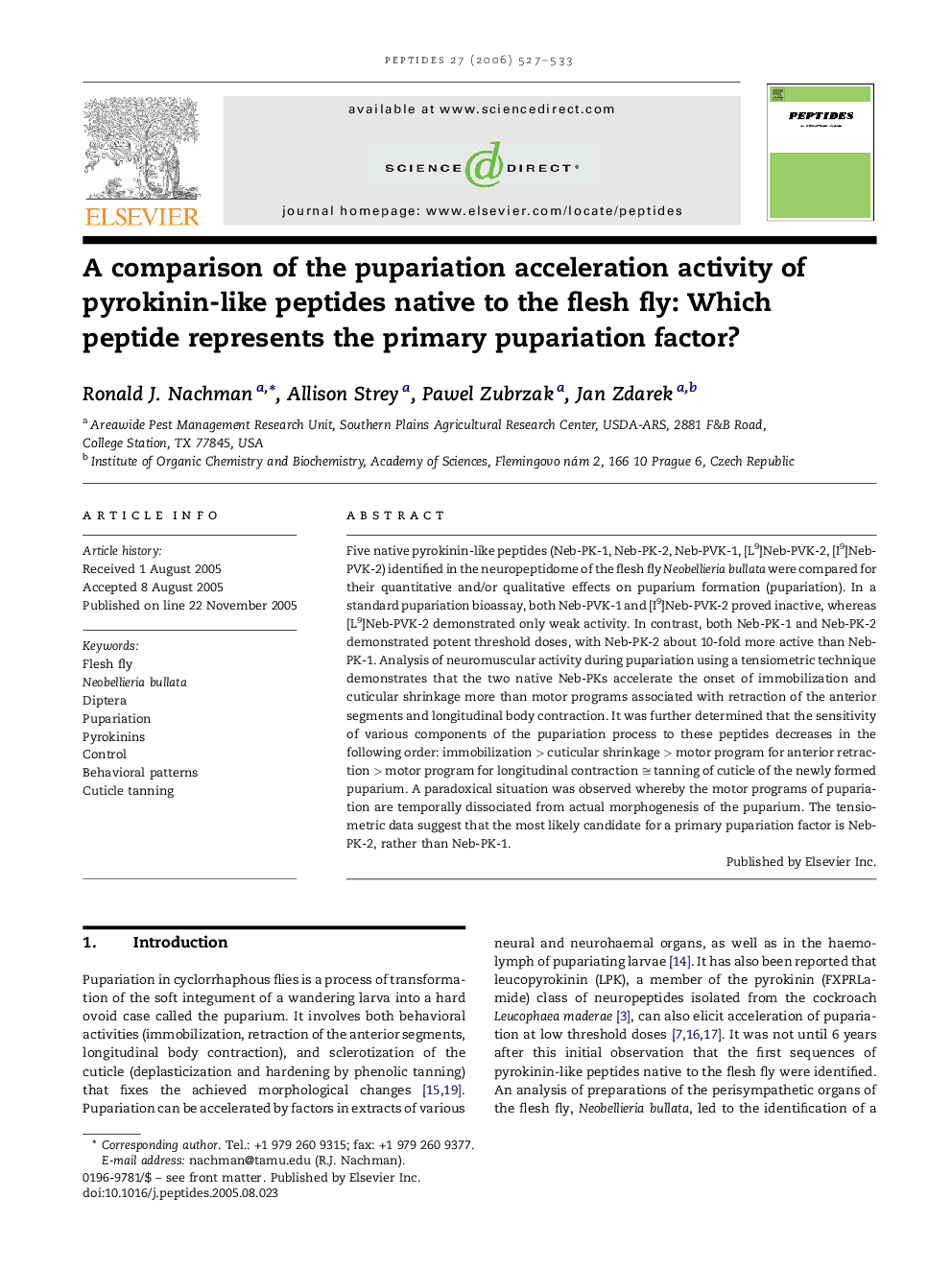| کد مقاله | کد نشریه | سال انتشار | مقاله انگلیسی | نسخه تمام متن |
|---|---|---|---|---|
| 2007995 | 1066392 | 2006 | 7 صفحه PDF | دانلود رایگان |

Five native pyrokinin-like peptides (Neb-PK-1, Neb-PK-2, Neb-PVK-1, [L9]Neb-PVK-2, [I9]Neb-PVK-2) identified in the neuropeptidome of the flesh fly Neobellieria bullata were compared for their quantitative and/or qualitative effects on puparium formation (pupariation). In a standard pupariation bioassay, both Neb-PVK-1 and [I9]Neb-PVK-2 proved inactive, whereas [L9]Neb-PVK-2 demonstrated only weak activity. In contrast, both Neb-PK-1 and Neb-PK-2 demonstrated potent threshold doses, with Neb-PK-2 about 10-fold more active than Neb-PK-1. Analysis of neuromuscular activity during pupariation using a tensiometric technique demonstrates that the two native Neb-PKs accelerate the onset of immobilization and cuticular shrinkage more than motor programs associated with retraction of the anterior segments and longitudinal body contraction. It was further determined that the sensitivity of various components of the pupariation process to these peptides decreases in the following order: immobilization > cuticular shrinkage > motor program for anterior retraction > motor program for longitudinal contraction ≅ tanning of cuticle of the newly formed puparium. A paradoxical situation was observed whereby the motor programs of pupariation are temporally dissociated from actual morphogenesis of the puparium. The tensiometric data suggest that the most likely candidate for a primary pupariation factor is Neb-PK-2, rather than Neb-PK-1.
Journal: Peptides - Volume 27, Issue 3, March 2006, Pages 527–533